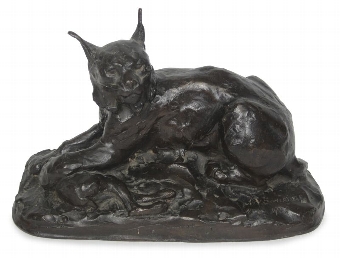featured item

quality pair of antique edwardian postal scales and weights Read more
antique italian grand tour patinated bronze sculpture of st peter 19th century

antiques available from other sellers in antique art > bronzes
-
![Bronze Lynx]() £850.00Georgian Antiques
£850.00Georgian Antiques -
![Bronze Marley Horses, Equestrian, Figures, Circa 1875]() £1700.00
£1700.00bronze marley horses, equestrian, figures, circa 1875 Read more
Frank Craig Antiques -
![Animalier Bronze]() £3500.00John Bryant-Pictures and Prints
£3500.00John Bryant-Pictures and Prints -
![Religious high-relief in bronze of the early 20th century]() £981.09
£981.09religious high-relief in bronze of the early 20th century Read more
Parino Mercato Antiquario
- View other items in:
- antique art
- bronzes
Still not found something similar? Why not save a search and get a notification in your inbox when an matching antique is added to our ever-growing database?
Enter your email address to be sent alerts when new items are added to the site that match your search criteria

A superb antique Italian Grand Tourpatinated bronze sculpture of St Peter seated on a bronze throne, circa 1880 in date.
This high quality hot cast solid bronze was produced using the traditional "lost wax" process, otherwise known as the"cireperdue"method.
The craftsmanship is second to none throughout all aspects of this beautiful sculpture.
Our reference: 09203
The Chair of Saint Peter (Latin: Cathedra Petri), also known as the Throne of Saint Peter, is a relic conserved in St. Peter's Basilica in Vatican City, the sovereign enclave of the Pope inside Rome, Italy. The relic is a wooden throne that tradition claims the Apostle Saint Peter, the leader of the Early Christians in Rome and first Pope, used as Bishop of Rome. The relic is enclosed in a sculpted gilt bronze casing designed by Gian Lorenzo Bernini and executed between 1647 and 1653. In 2012, Pope Benedict XVI described the chair as "a symbol of the special mission of Peter and his Successors to tend Christ's flock, keeping it united in faith and in charity."
Antiques.co.uk Ref: 4YYVX5BRW
- Width (cm):
- 6.5
- Height (cm):
- 18
- Depth (cm):
- 8.5
Here on antiques co uk we love antiques and specialise in selling antiques. Even though this item was for sale and is now sold or otherwise now unavailable we have many more items for sale including vintage antiques, silver, tables, watches, jewellery and much more for your interiors and home.
Search all the antiques currently for sale on www.antiques co uk. Or why not consider selling your antiques and making sales more easily with us!
regent antiques limited
Regent Antiques Limited has 986 antiques for sale.
click here to see them all









